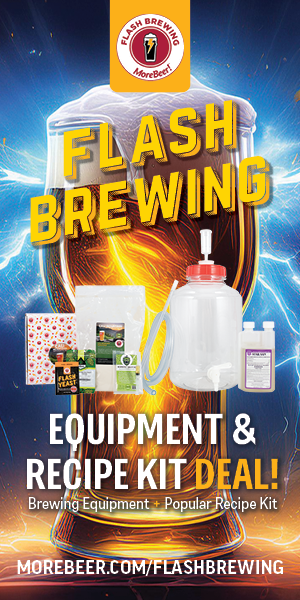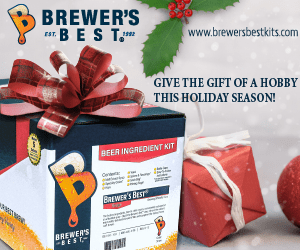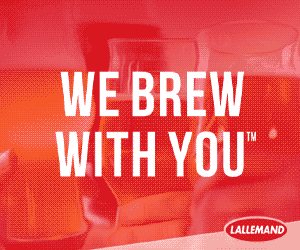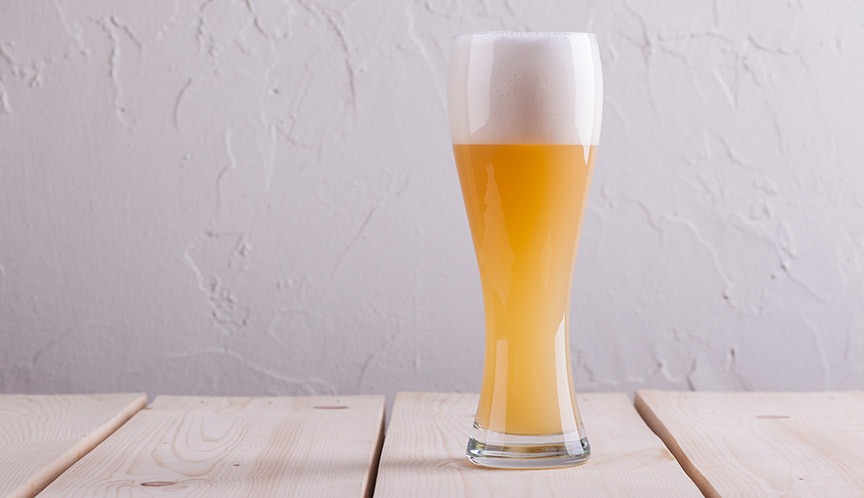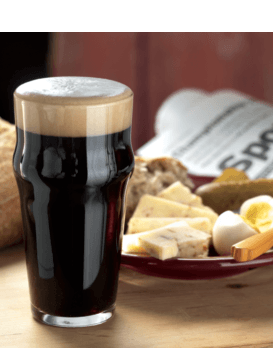Judging Off Flavors
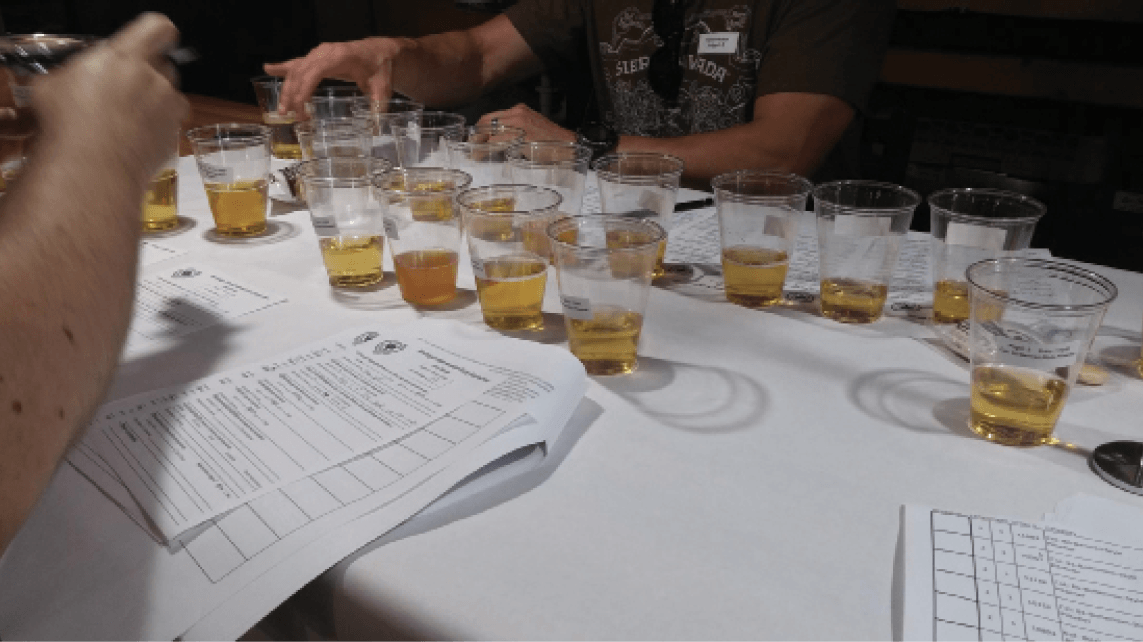
Beer is cacophony of flavor. There are over 500 flavor compounds in hops alone, and the other three basic ingredients of water, grain, and yeast add many hundreds more. As we combine these ingredients in the brewing process even more flavors are created by heating, fermenting, and aging our beer. The combinations are endless.
Unfortunately not all of these flavors are good. Some flavors the beer drinker finds pleasant, while others are downright bad. A variety of “off flavors” are present to some degree in any beer. Many of these compounds may be below the tasting threshold, but once a flavor reaches a certain threshold even a casual drinker can tell that something is wrong. In the extreme, certain off flavors can render a beer undrinkable.
What we perceive as an off flavor is highly dependent on the style of beer. A strong alcoholic warmth might be perfect for a barleywine but would be inappropriate in a light lager. Fruity esters or buttery diacetyl could easily ruin a light lager but might not seem out of place at all in an English ale or be hidden entirely in a porter or stout. So off flavors are definitely a subjective topic, and need to be judged against the expectations for a particular beer.
Judging Off Flavors
The first step in troubleshooting any beer is to be able to identify and understand the off flavor you’re dealing with. Individual off flavors have specific causes tied to steps in the brewing process, ingredient selection, or recipe balance. Unfortunately if you can’t identify the flaws in your beer it is nearly impossible to correct or prevent them.
I can’t provide a complete course in judging beer or identifying off flavors in one article, but I encourage you to develop your beer judging skills over time by deliberately sampling beers for flaws and also sampling beers with an experienced beer judge. The Beer Judge Certification Program (BJCP) at BJCP.org is a great program if you want to get serious about judging beer, and most of the top brewers I know are also great beer judges. In this article, we’ll go over common off flavors in beer as would a BJCP judge, and also diagnose the source of the flaws.
Before we get started, BJCP program publishes a beer score sheet used to judge and score beers that is a great resource for evaluating your own beers. You can download the sheet from the BJCP website and follow along, and also use it in the future for your own homebrew evaluations: http://www.bjcp.org/docs/SCP_BeerScoreSheet.pdf. The most common off flavors on the score sheet are listed below.
Now, let’s walk through a selection of the off flavors that I see most often as a beer judge and go into some detail on the root causes. In some cases a single off flavor can have more than one root cause, so you will need to use some judgment in identifying root cause for your particular beer. The ones I’m going to cover are acetyldehyde, alcoholic, atringency, diacetyl, DMS, estery, oxidized, phenolic, and sour/acidic.
Acetaldehyde
Acetaldehyde has the flavor and aroma of green apples or more rarely a fresh cut pumpkin. Yeast produces acetaldehyde (CH3CHO) during the fermentation process as glucose (sugar) is fermented into ethanol (alcohol). It is an intermediate compound, so during fermentation it is present in every beer. However, if the yeast and fermentation is healthy the acetaldehyde will later be converted into alcohol.
The root cause here is usually unhealthy yeast or incomplete fermentation. This can be caused by starting with a poor yeast sample, not pitching enough yeast, failing to oxygenate the wort before pitching your yeast or prematurely halting fermentation by racking the beer off or bottling it before fermentation is complete.
There is a secondary possibility as well. In rare cases ethanol (alcohol) in finished beer can combine with oxygen and bacteria to produce acetaldehyde, often with vinegar flavors. Obviously you don’t want to expose fermented beer to either oxygen or bacteria contamination.
Alcoholic
Alcoholic off-flavors in beer can vary from mild warmth to a hot spicy “moonshine” flavor of higher level alcohols. While this flavor may be appropriate for very high gravity beers such as barleywine or imperial stout, in most cases it is a flaw. The most common cause for an alcoholic
defect is the presence of higher order fusel alcohols.
A normal fermentation will produce ethanol which is the alcohol we enjoy in beer. However a number of other alcohols are produced during fermentation including the fusels: Isoamyl Alcohol, Propanol, Butanol, and Isobutanol. These secondary alcohols are a byproduct of fermentation but typically remain well below the flavor threshold. If too many of these are produced we get a flaw.
Yeast produces more fusel alcohols as the temperature rises during fermentation, so the primary cause of an alcoholic flaw is fermenting at too high a temperature. You need to maintain your fermenter in the recommended range for your yeast during fermentation, taking into account that the temperature inside the fermenter is often several degrees higher than the surface temperature. Underpitching and under aerating can also contribute to this defect.
Fusels can also be produced by leaving beer in contact with primary yeast sediment for several months. This is fairly rare, but if you plan to store your beer for many months in the fermenter, you should rack it off to a secondary vessel to remove the yeast sediment.
Astringency
Astringency manifests itself as a mouthfeel that is akin to sucking on a tea bag. It has a dry, grain husk flavor that is distinctive from the lactic sour beer flaw we’ll cover later in this article. Astringency is primarily caused by tannins, which are polyphenols present in grain husks.
For extract brewers, tannins come from steeping grains in water that is too hot or steeping with too much water. Hot temperatures above 168 °F (76 °C) will extract more tannins. Similarly steeping with more than 2 quarts (2 L) of water per pound (4 L/kg) of malt or steeping for longer than 30 minutes can extract tannins.
For all-grain brewers, the most common problem is getting the grain bed too hot during the sparge. Again the sparge water should be no hotter than 168 °F (76 °C). You can also extract tannins from an elevated sparge pH (above 6.0), which can happen at the end of the runnings when sparging, though this is not very common for homebrew scale systems as most home setups are lower efficiency and homebrewers don’t attempt to extract the last few points from the sparge as some commercial brewers do. Pro brewers often monitor the pH of the sparge or acidify their sparge water to prevent oversparging.
Polyphenols can also be extracted from hops and certain spices in very hoppy beers, though this is a less common problem than astringency from sparging.
Diacetyl
Diacetyl tastes like butter or butterscotch and in fact is used as a flavoring for artificial butters. It is one of two major vicinal diketons (VDKs) produced during fermentation, the other being pentanedione which has a honey-like flavor. It is more noticeable in light flavored beers like lager, and is less prevalent in ales which get fermented at a higher temperature which tends to break down the VDKs.
Diacetyl is a natural byproduct of fermentation so it can’t be completely eliminated. However, healthy yeast tends to break down both diacetyl and pentanedione in the later stages of fermentation.
To reduce diacetyl you need to pitch the proper quantity of healthy yeast with a good starter, and assure proper aeration of the wort prior to pitching. All beer needs to be sufficiently aged in addition to proper pitching rates and proper aerating. This will eliminate the problem in most beers.
For lagers, a special temperature step is added during fermentation called a diacetyl rest. The rest raises the temperature of the beer to just a few degrees above the fermentation temperature near the end of fermentation which helps active yeast mop up the VDKs.
A final method for controlling diacetyl is to pitch some additional fresh yeast after fermentation has completed which allows the fresh yeast to break down the VDKs.
Diacetyl can also be produced by bacteria such as Pediococcus, so it is important to sanitize anything contacting your beer. Bacterial diacetyl is very common in dirty keg lines and faucets. You’ll often find this in beer served at pubs and restaurants. Be sure to regularly clean your keg lines and faucets to prevent buildup.
Dimethyl Sulfide (DMS)
Dimethyl sulfide (DMS) has a cooked or creamed corn flavor and is most easily detected in lighter flavored beers. DMS is created whenever wort is heated, so it is present in every beer.
A malt compound called S-methyl methionine (SMM) is responsible for DMS. It is an amino acid formed during germination of the malt, and heating SMM during mashing produces DMS. Two-row malts typically have less SMM than six row malts (lower protein), and Pilsner malts tend to have more DMS than pale malt (less kilning).
DMS is created in the mash, but evaporates during the boil, so a strong rolling boil is important to control DMS. In a typical homebrewing setup, DMS has a half life of about 40 minutes when boiling, so a 60-minute boil gets rid of 65% of the DMS, and a 90-minute boil volatizes about 80% of the DMS. That’s why experienced brewers recommend a 90-minute boil, which in most cases reduces DMS below the flavor threshold.
DMS needs to evaporate during the boil, so you should never cover your pot. DMS is a common issue with some commercial systems that have uninsulated vertical chimneys venting the boiler, and no blower installed. In these small breweries, DMS can condense on the inside of the uninsulated chimney and fall right back into the boiler.
Rapidly chilling your wort after the boil is also important because some SMM is still being converted to DMS even after the boil is complete. For every hour you have hot wort sitting around, you raise the DMS produced by approximately 30%.
During fermentation, CO2 bubbles actually remove additional DMS from the beer, creating some DMS aromas. As a result, a strong, active fermentation can also aid in reducing DMS. Ale yeasts tend to yield less DMS in the final beer than lagers.
Esters in Beer
Esters are fruity flavors and aromas produced during fermentation and vary between pears, roses, bananas and other light fruits. Very high levels can create solvent-like flavors.
Esters are produced by the “esterification” of ethanol which is the primary alcohol in beer. The largest ester in most beers is ethyl acetate, which varies in flavor from a light pear-like character to a strong solvent flavor. Other alcohols in beer can also produce esters. For example the distinct banana flavor in a Bavarian weizen comes from isoamyl acetate derived from isoamyl alcohol.
Yeast selection is a driving factor in ester production. Yeasts have an enzyme called acetate transferase (AAT) which drives the production of esters. Low AAT yeasts produce far fewer esters than high AAT yeasts, so selecting a yeast appropriate to your beer is critical.
Higher temperatures also drive higher ester production, which is why in general ale yeasts produce more esters than lager yeasts. Fermenting in the recommended temperature range for your yeast will help to control ester production.
Yeast pitch rates also drive ester production. Under pitching your yeast will lead to a period of very rapid reproduction which enhances AAT in the yeast and drives more esters. Many beginning homebrewers don’t use a starter and underpitch, resulting in excessive ester production. Pitch enough yeast and you will control ester production.
You can reduce esters by properly aerating your wort. If your wort has sufficient oxygen it will inhibit the production of ethyl acetate during the growth phase resulting in less ester production. Under-oxygenating your wort will enhance ester production.
Oxidized Beer
Oxidized beer has a stale, cardboard, papery, wine-like, or Sherry-like flavor and aroma to it. As the name implies, oxidized beer comes from beer that has been exposed to oxygen after fermentation is complete. Oxygen is a very reactive element in beer, and even a small amount will combine with a variety of compounds to stale finished beer. While cold storage can slow this process, it will not entirely prevent it.
Light colored beers tend to form a nasty compound called trans-2-nonenal which tastes like paper, cardboard, or lipstick. It has a very low flavor threshold of 0.1 parts per billion, so even a small amount of oxygen can rapidly spoil your light beers and give them a cardboard or paper flavored staleness.
Darker beers tend to produce different flavors as they age. Dark melanoidins tend to oxidize producing a wide range of compounds including the almond flavored benzaldehyde. Overall as darker beers oxidize, they tend to produce Sherry-like or wine-like flavors. While some beer drinkers find these flavors enjoyable, the malt character of the beer tends to decline upsetting flavor balance.
Preventing oxidation involves assuring no oxygen enters the beer after fermentation has started. For homebrewers this means no splashing, minimal stirring, and controlled bottling or kegging. Many homebrewers now forgo transferring their beers to a secondary to reduce the chance of oxygen contamination.
Phenolics
Phenolics cause some confusion because they can introduce a variety of flavors to homebrewed beer which vary from clove and banana at the low end to spicy or smoky flavors or even medicinal or band-aid like flavors in the extreme. In certain styles, notably German weizens and many Belgian beers the clove flavor can be desirable, but in most beers phenolics are considered a flaw.
Phenolics are naturally produced by many yeast strains during the fermentation process, with some Belgian, German, and British yeast strains being higher level producers. Another common source of phenols is wild yeast, which produces band-aid like flavors.
Water selection can be one source of phenols. In particular, chlorinated water will react with naturally occurring phenols in your beer giving you chlorophenols. These can be detected at very low flavor thresholds as a strong band-aid or even diaper aroma in the finished beer.
Yeast, bacteria, and wild yeasts can also be a source of phenols. Belgian and wild yeasts produce high levels of phenols as well as the German wheat yeasts mentioned earlier. At low levels these can be a clove-like flavor, but at higher levels these phenols create smoky or spicy flavors.
Finally, as mentioned in the section earlier on astringency, tannins are a form of polyphenol that result in astringent off flavors. All of the tips on steeping and mashing grains mentioned in that section apply here as well.
Sour Beer
Sour flavors can come from several sources, but by far the most common cause of sour beer is lactic acid producing bacteria. Infections can occur at almost any stage in the brewing process after boiling is complete. Sour flavors have variations from slightly sour to buttery to acetic.
The dominant souring compound is lactic acid, which gives the distinctive sour finish you may have tasted in intentionally soured beers or sourdough bread. Lactic acid is produced by Lactobacillus, a common bacteria used to sour many Belgian beer styles. In fact major yeast suppliers sell Lactobacillis as a separate culture for use in styles such as Flanders ale. It also naturally occurs in the wild, and is common on unsanitized surfaces and equipment.
Another souring agent is Pediococcus which is also a bacteria. Pediococcus, however, produces a combination of sour and buttery flavors that is slightly different than lactic acid. If you have both a buttery flavor and sour flavor in your beer you likely have a Pedio infection.
A final common bacteria is Acetobacter. Acetobacter produces acetic acid instead of lactic acid. Acetic acid is a major component in vinegar and has its associated flavor profile. However Acetobacter requires both a bacterial infection and oxygen to grow. So in addition to poor sanitation, you need to have introduced some oxygen into the finished beer to get acetic acid. So if you get a vinegar flavor in your beer, check both your sanitation and handling procedures. Acetobacter usually grows on the surface of your beer that has oxygen in the headspace, so prevent it from taking hold be sure to top up your storage vessels.
Bacteria is not the only source of sour flavors in beer. Wild yeasts can also sometimes produce sour flavors combined with ester (fruity) flavor. Brettanomyces (called Brett for short) is a wild yeast that thrives on the skins of fruit, and is not uncommon in many beers made with fresh fruit. Other natural wild yeasts can also give a slightly sour off flavor often with tell-tale fruity esters. Again, proper sanitation is the key here.
Summary
Though we’ve only covered a bit over half of the “off flavors” recognized by the BJCP, you may have noticed a common theme in the root causes for these flaws. As with so many things in brewing, it all comes down to sound brewing techniques.
The careful selection of quality fresh ingredients, to include good brewing water, is the starting point for a good batch of beer. If you are an extract brewer, manage your steep water carefully to avoid tannins.
For all-grain brewers, monitor the mash pH and avoid oversparging your grains.
A 90-minute boil with an uncovered pot can reduce DMS. Chilling your beer quickly can also help. Yeast health is critical in so many ways, so be certain to pitch a sufficient quantity of healthy yeast, and aerate your wort before pitching. Ferment at a controlled temperature to avoid excessive esters and fusel alcohols. Pay attention to cleaning and sanitation.
Take an objective look at your beer as if you were a judge. Go over a scoresheet and see how the beer in front of you presents. Hopefully it will help you diagnose and correct some of the off-flavors. Learn more about both judging beers and correcting off flavors as your brewing progresses, and appreciate how learning to judge beers can make you a better brewer.
- Acetaldehyde – A green-apple aroma and flavor
- Alcoholic – Heavy alcohol aroma and flavor, sometimes described as hot
- Astringent – Grainy, husky, dry bitter flavor (sucking on a tea bag)
- Diacetyl – Butttery, butterscotch, buttered popcorn or toffee aroma
- DMS (Dimethyl sulfide) – Cooked corn, creamed corn flavor and aroma
- Estery – Fruity, fruit flavoring, pears, or roses
- Grassy – Fresh cut green leaves or a freshly mowed lawn
- Skunky/Light-struck – The aroma of a skunk
- Metallic – Can be copper, iron, tinny or a blood-like flavor
- Musty – Moldy, stale or musty aroma and flavor
- Oxidized – Cardboard, paper, Sherry, stale or wine flavors
- Phenolic – Spicy, smoky, plastic or even medicinal band-aid flavors
- Solvent – Lacquer thinner, paint thinner, higher alcohol aromas
- Sour/Acidic – Tart, sour, can be clean lactic flavor to vinegar-like
- Sulfur – The aroma of rotten eggs or burning matches
- Vegetal – Cooked, canned or rotten vegetables
- Yeasty – Bready, sulfury or yeast like aroma and flavor

